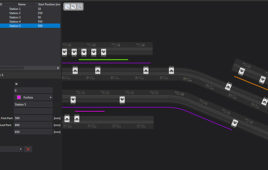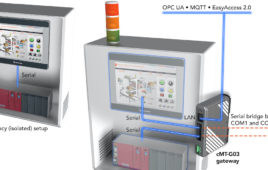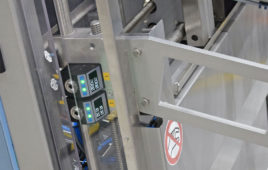
(Left: Tobin Richardson, ZigBee President and CEO; right: Graham Martin, EnOcean VP Strategic Alliance)
On Wednesday, December 16th, the ZigBee Alliance and EnOcean Alliance announced that they will work together to develop an open, global specification for energy harvesting wireless communication.
Using EnOcean’s expertise and ZigBee 3.0, the work will extend energy harvesting wireless communication to a broader range of self-powered, IoT sensor solutions, using the surrounding environment as their energy source and making battery-less connected devices a reality. (Click here to read the full announcement.)
Here, Tobin Richardson, ZigBee Alliance President and CEO, and Graham Martin, EnOcean VP Strategic Alliance, provide a more in-depth look at the announcement and at its projected impact on the IoT and wireless industries.
How will the expertise of both organizations simplify and deliver on the promise of interoperable, self-powered IoT solutions?
Today, many companies use ZigBee as a leading standard for worldwide wireless applications in 2.4 GHz. With the rise of the IoT and associated predictions for billions of sensors, self-powered solutions see a growing demand. In this field, EnOcean is the leading technology standard for over 15 years. The cooperation of the ZigBee Alliance and the EnOcean Alliance combines the advantages of both, incorporating the benefits of EnOcean interoperable energy harvesting wireless solutions with ZigBee 3.0 for worldwide use.
As a result, the industry will have new opportunities for creating intelligently connected systems and developing new solutions across a variety of applications. The collaboration is also designed to provide a foundation to seamlessly bring data to the IoT frameworks of other industry initiatives, in order to facilitate interoperable communication from the sensor to the cloud.
How will the collaboration deliver on EnOcean’s mission to promote intelligent green buildings?
The EnOcean radio standard sub 1 GHz is one of the most widely used wireless standards for professional home and commercial building automation and is an established solution for the mass market worldwide. On this basis, the EnOcean Alliance has formed a strong ecosystem with more than 400 members and over 1,500 interoperable products around this field-proven and established standard for energy-efficient buildings. Developers and OEMs profit today and in the future from this comprehensive knowledge base and the ecosystem with a proven technology and a fast time-to-market.
The new cooperation is a great expansion to this existing ecosystem, bringing energy harvesting wireless communication to many more fields of application in the IoT and consumer arena. It will also result in new capabilities for intelligently connected buildings.
What are the long-term goals of this collaboration?
The long-term goal of this collaboration is to develop an open, global specification for energy harvesting wireless communication technology, which meets the growing demand for interoperable, self-powered IoT sensor solutions. The market will benefit from the synergies of both technologies, combining the interoperable, intelligent and easy-to-use connectivity of ZigBee 3.0 for smart homes, smart buildings and the Internet of Things with the capabilities of established solutions of a strong energy harvesting ecosystem. It also enables worldwide energy harvesting wireless solutions based on a globally unified protocol (2.4 GHz), which brings convergence to the market and opens new fields of application to energy harvesting.
How will this collaboration impact the IoT/wireless industries?
The wireless industry faces the challenges of the IoT. It requests simplicity, plug & play solutions and the seamless cooperation of industry leading standards. This goes hand in hand with predicted trillions of sensors to deliver the data for intelligent systems. This can only be realized with energy harvesting devices. The cooperation of the ZigBee Alliance and the EnOcean Alliance joins forces to meet exactly these challenges.
Filed Under: M2M (machine to machine), Energy management + harvesting




